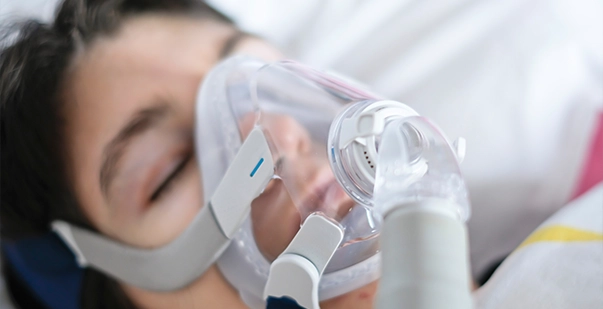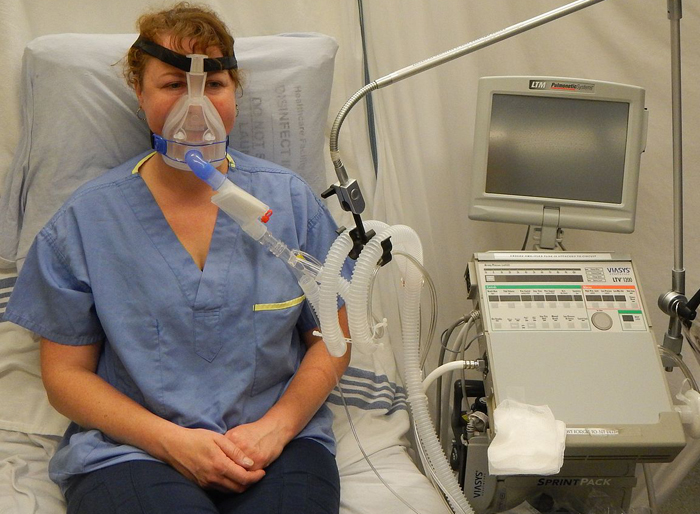Practical BiPAP Rental Solutions with Quick Distribution
Practical BiPAP Rental Solutions with Quick Distribution
Blog Article
Bipap vs. CPAP: Which Is the Finest for Your Rest Disorder?
When navigating the intricacies of sleep disorders, the selection between BiPAP and CPAP treatment is an essential factor to consider. While CPAP provides a constant air flow ideal for obstructive sleep apnea, BiPAP's twin pressure setups may improve comfort for those with even more elaborate respiratory concerns.
Understanding Rest Disorders
Sleep problems encompass a series of conditions that interfere with typical rest patterns, impacting both the quality and period of rest. These problems can materialize in various kinds, including insomnia, sleep apnea, narcolepsy, troubled leg syndrome, and parasomnias. Each problem presents distinct obstacles, commonly resulting in substantial daytime fatigue, cognitive problems, and psychological disturbances.
Sleeping disorders is identified by difficulty dropping or remaining asleep, while sleep apnea includes duplicated interruptions in breathing during sleep, usually resulting in fragmented remainder. Narcolepsy, on the other hand, is marked by extreme daytime drowsiness and unexpected rest strikes. Uneasy leg disorder creates awkward sensations in the legs, triggering an irrepressible urge to move them, which can likewise prevent the capacity to fall asleep.
The impact of sleep conditions expands past specific health, influencing general efficiency, partnerships, and lifestyle. Comprehending the details nature of each disorder is critical for efficient medical diagnosis and treatment. As rest health and wellness comes to be progressively recognized as a crucial part of total wellness, dealing with these problems is crucial for boosting both sleep top quality and daily performance.
Just How CPAP Works
Constant Favorable Airway Stress (CPAP) therapy is often employed as a key therapy for obstructive rest apnea (OSA) The system of CPAP involves making use of an equipment that provides a steady stream of air through a mask put on during sleep. This air movement keeps positive pressure in the respiratory tract, stopping the collapse or obstruction of the throat that can occur throughout sleep.
When a person takes in, the CPAP device provides a continual flow of air, ensuring that the respiratory tract stays open - BiPAP Rental. This not only alleviates the signs and symptoms of OSA, such as snoring and interrupted rest patterns, yet also lowers the connected health and wellness threats, consisting of cardio issues and daytime fatigue
The stress settings on a CPAP machine can be personalized to meet specific patient demands, typically identified via a rest research. Individuals generally undergo titration studies to discover the optimum pressure degree for their unique problem. Normal follow-up and adjustments might be essential to guarantee performance and comfort. Generally, CPAP treatment has been revealed to dramatically enhance the quality of sleep and general wellness for individuals struggling with obstructive sleep apnea.
Exactly How BiPAP Functions
BiPAP, or Bilevel Positive Respiratory Tract Stress, is a customized kind of non-invasive air flow that is particularly valuable for patients with conditions such as complex sleep apnea or respiratory system problems. Unlike CPAP, which delivers a constant stream of air at a solitary stress, BiPAP provides 2 unique pressure setups: a higher inspiratory stress for inhalation and a lower expiratory stress for exhalation. This dual-pressure approach permits for much easier breathing, minimizing the initiative called for throughout exhalation.
The device operates through a mask fitted over the nose or mouth, connected to a device that produces atmospheric pressure. When the patient breathes in, the maker provides the higher pressure to help with air flow, making certain that the air passage stays open. Upon exhalation, the machine immediately decreases the pressure, making it extra comfortable for the individual to breathe out.

Key Differences In Between BiPAP and CPAP

On the other hand, BiPAP (Bilevel Positive Respiratory tract Stress) provides two different pressure settings: one for inhalation and a lower one for exhalation. This dual stress system allows for more comfortable breathing, particularly for people who fight with breathing out versus a continuous pressure. BiPAP is typically suggested for individuals with intricate sleep apnea, chronic obstructive lung illness (COPD), or those who need added assistance during sleep.
Additionally, the intricacy of BiPAP devices normally have a peek here results in a greater price and needs a lot more careful titration than CPAP. BiPAP Rental. Understanding these crucial distinctions can aid in recognizing which tool might be preferable for details sleep problems, establishing the groundwork for informed therapy More Help choices
Choosing the Right Treatment
The choice in between BiPAP and CPAP treatment mostly pivots on the details characteristics of the rest condition, the client's general health and wellness, and their convenience with the tool. CPAP, which supplies a continual stream of air, is commonly prescribed for obstructive rest apnea (OSA)
On the other hand, BiPAP supplies 2 levels of pressure: one for inhalation and a reduced one for exhalation. This double pressure system is beneficial for people with complex sleep apnea or those that experience problem breathing out versus a continuous stress. Additionally, BiPAP is often recommended for people with respiratory problems, such as persistent obstructive lung condition (COPD), where differing pressure setups can improve convenience and compliance.
Eventually, an extensive examination by a sleep professional, including a rest research study, can aid figure out which therapy straightens ideal with the client's requirements. Factors such as convenience, convenience of usage, and particular clinical conditions need to likewise be taken into account to enhance treatment results.
Final Thought
In summary, both BiPAP and CPAP offer unique purposes in the management of sleep disorders. CPAP works for obstructive sleep apnea with regular air movement, while BiPAP supplies dual pressure settings that enhance convenience for those with complex rest apnea or breathing concerns. The selection in between these therapies need to be directed by private requirements and conditions, necessitating a thorough evaluation by a rest professional to make sure ideal therapy results and boosted quality of rest.

Overall, CPAP treatment has actually been shown to considerably boost the high quality of sleep and general wellness for individuals enduring from obstructive rest apnea.
BiPAP is commonly advised for clients with intricate sleep apnea, chronic obstructive pulmonary condition (COPD), or those that need extra support during rest.
CPAP is efficient for obstructive sleep apnea through constant air flow, while BiPAP uses dual stress setups that boost comfort for those with complex sleep apnea or respiratory concerns.
Report this page